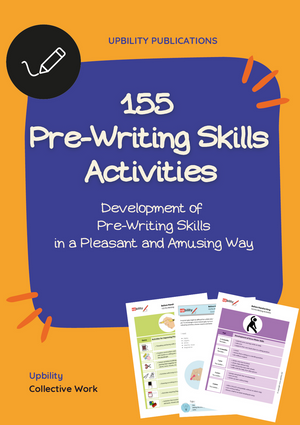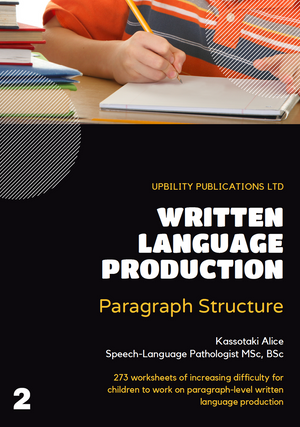
Expressive Language: Getting it Right!
Expressive language signifies the ability to use words, sentences, gestures and writing to convey notions and messages to other people. Expressive language skills include the ability to name objects in our surroundings, describe actions and events, formulate sentences, use grammar correctly, retell stories and respond to questions.
Expressive language skills are important, because they enable us to describe our needs and desires, express our thoughts and ideas, support our views with clear arguments, develop the ability to express ourselves in writing and interact effectively with other people.
What is expressive language disorder?
Expressive language disorder affects work and schooling in many ways. It is usually treated by specific speech therapy, and usually cannot be expected to go away on its own.
Expressive language disorder can be further classified into two groups: developmental expressive language disorder and acquired expressive language disorder.
Developmental expressive language disorder currently has no known cause, is first observed when a child is learning to talk, is more common in boys than girls, and is much more common than the acquired form of the disorder. Acquired expressive language disorder is caused by specific damage to the brain by a stroke, traumatic brain injury, or seizures.
Care must be taken to distinguish expressive language disorder from other communication disorders, sensory-motor disturbances, intellectual disability and/or environmental deprivation (see DSM-IV-TR criterion D). These factors affect a person's speech and writing to certain predictable extents, and with certain differences.
Careful diagnosis is also important because "atypical language development can be a secondary characteristic of other physical and developmental problems that may first manifest as language problems".
There is also a lot of debate about whether specific language impairments, such as expressive language disorder, are caused by deficits in grammar or by a deficit in processing language information.[6] However, an alternative hypothesis to the cause of SLIs has been posited, called the Procedural Deficit Hypothesis. The Procedural Deficit Hypothesis opines that we can explain language impairments due to abnormal development of brain structures that are involved in procedural memory, our memories that remember how to perform different cognitive and motor tasks. The procedural memory system is associated with basal-ganglia circuits in the frontal lobe and further investigation of this particular hypothesis could aid in the development of a clinical neurological picture of what the underlying causes of SLI are.
Children with expressive language disorder have difficulty conveying or expressing information in speech, writing, sign language or gesture. (For preschool children, the difficulty expressing themselves in writing is not evident, as they have not started formal education.)
Some children are late in reaching typical language milestones in the first three years, but eventually catch up to their peers. These children are commonly referred to as ‘late-talkers’. Children who continue to have difficulty with verbal expression may be diagnosed with expressive language disorder or another language impairment.
Cause of expressive language disorder
For many children, the cause of expressive language disorder is not known. Some children experience difficulties in language development alone, while other areas of their development are progressing as expected. For other children, expressive language disorder is associated with known developmental difficulties or impairments (for example, Down syndrome, autism or hearing loss).
Many children with expressive language disorder will have an accompanying ‘receptive’ language disorder, meaning that they have difficulty in understanding language.
Expressive language disorder can be a developmental impairment (from birth) or an acquired impairment (occurs after a period of normal development). It can be the result of trauma (such as a knock to the head) or a medical condition. Research suggests that, in some cases, expressive language disorder occurs in more than one family member, and across generations.
The development of expressive language is inextricably linked with an adequate mastery of the following skills:
- Receptive language: the ability to understand language.
- Attention and concentration: the ability to keep our attention focused on a task for a long time and block out distractions.
- Pre-verbal skills: the ability to use other means of communication besides words, such as gestures, facial expressions, miming and so on.
- Play skills: the desire to voluntarily take part in enjoyable activities that may or may not necessarily have a particular goal.
- Pragmatics: awareness of the way speech is used in social situations.
- Motivation and the desire to communicate with other people.
- Fine motor skills, to be able to develop alternative forms of expressive language.
You can tell a child is facing expressive language difficulties, if the child:
- has difficulty naming objects,
- does not link words or phrases together to form sentences that are appropriate for his/her age,
- produces phrases that are not adequately developed and sound rather “immature” for his/her age,
- produces sentences that sound “messy” (for example, puts words in the wrong order, pauses and restarts too often or lacks fluency),
- cannot be understood by people who don’t know him/her,
- has difficulty finding the right words to use when talking to other people or when describing or explaining something,
- struggles with retelling a story,
- has difficulty expressing thoughts and telling stories in writing.
*The level of difficulty may vary depending on the child’s age and ability
PICTURE CARDS | Expressive Language: Getting it Right!
Do your learners struggle with word-finding? Are you looking for a fun and practical tool to boost their expressive language skills? This comprehensive pack of picture cards features all you need to enhance expressive language in a fun and challenging way! Built around useful everyday experiences, it contains a set of 60 large picture cards (17 x 12 cm each) featuring a full-color photo on the front and a set of targeted questions on the back of each card – alongside answer notes for each question, to save you valuable preparation time!
Suggested Articles by Upbility
- ADHD and Substance Abuse in Teenagers A Research
- Reading comprehension and autism
- 5 Tips For A Happy Summer For Kids With ADHD
- The Impacts Of Distance Learning A Review
Suggested Books on ADHD:


